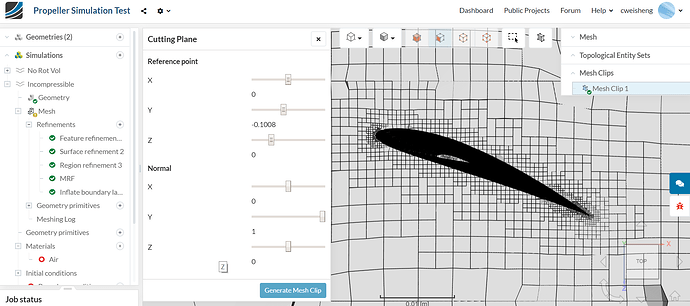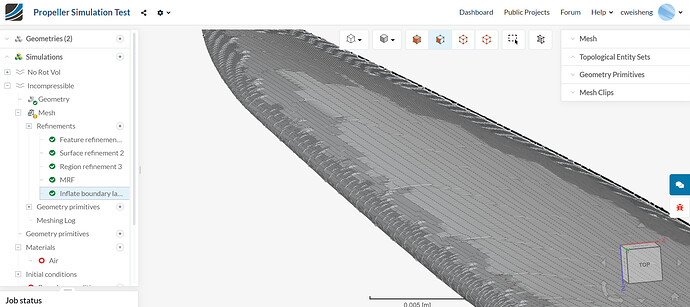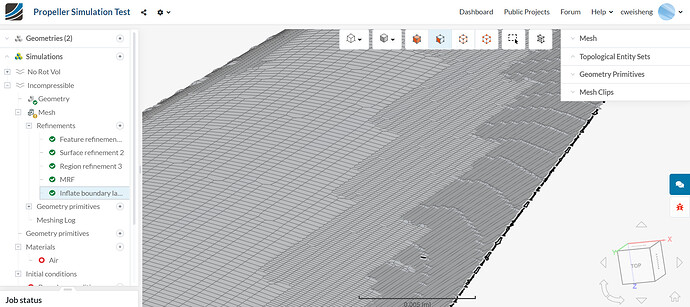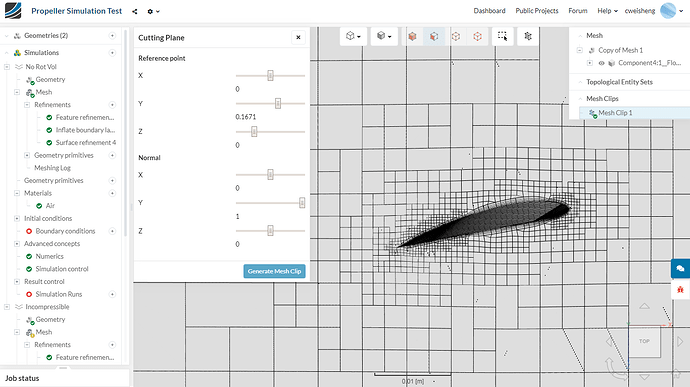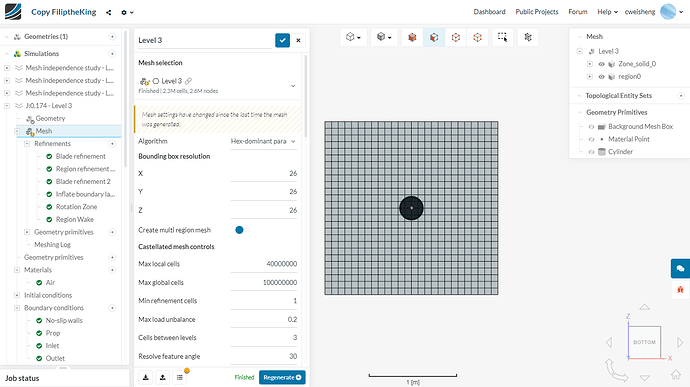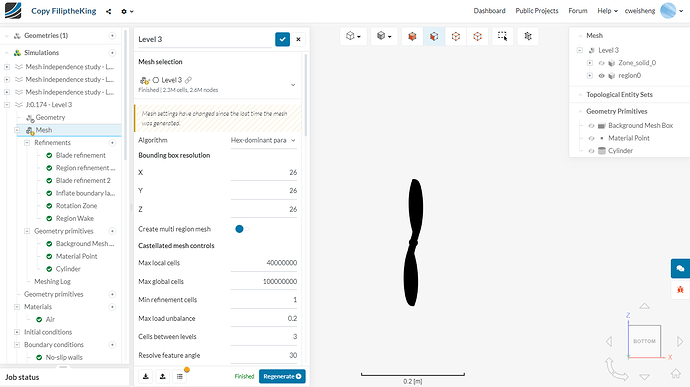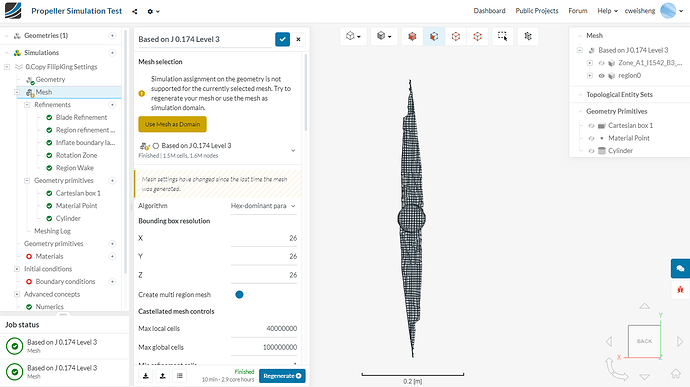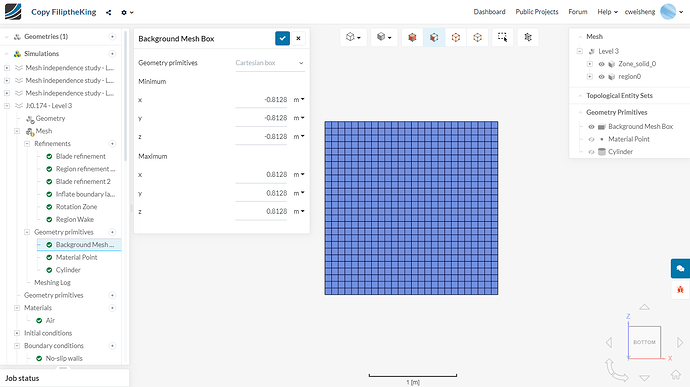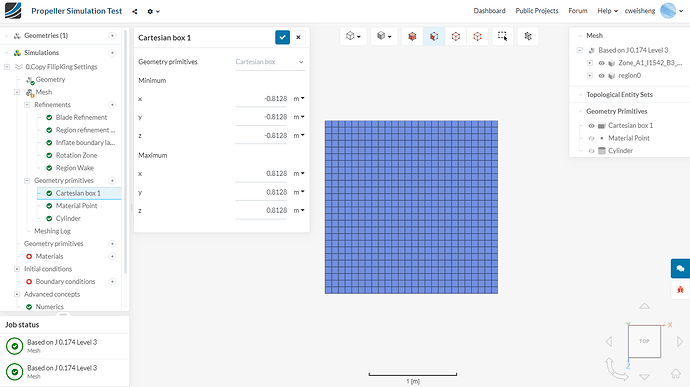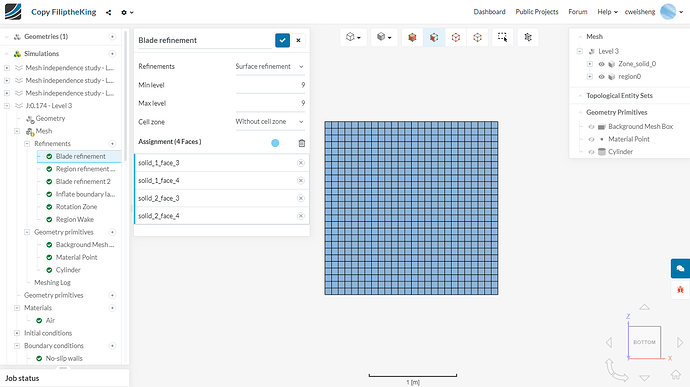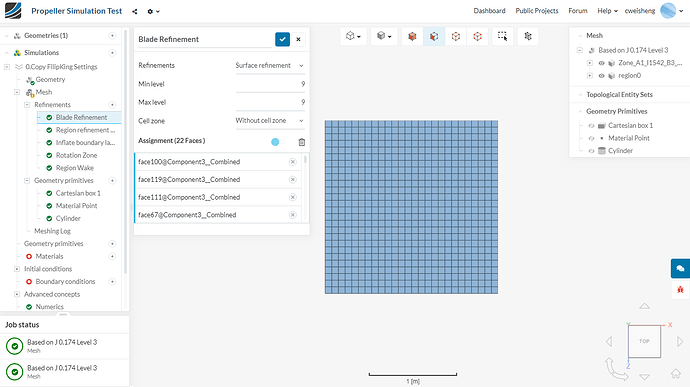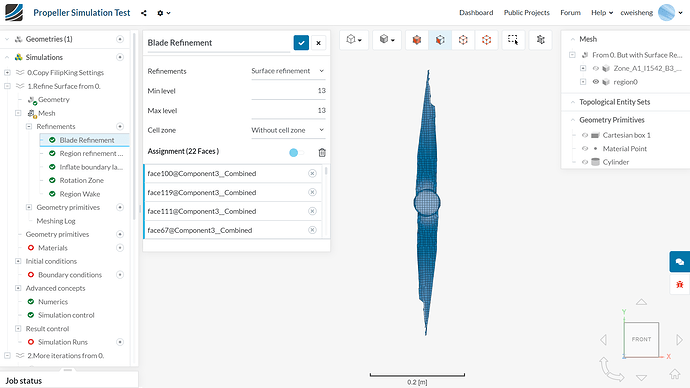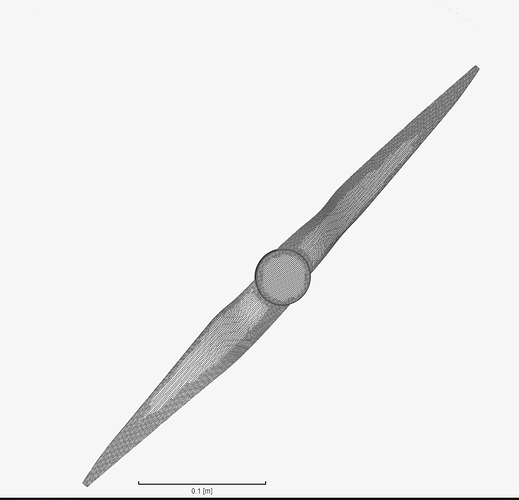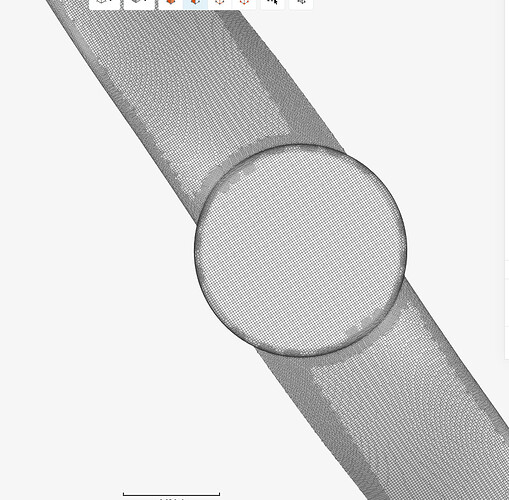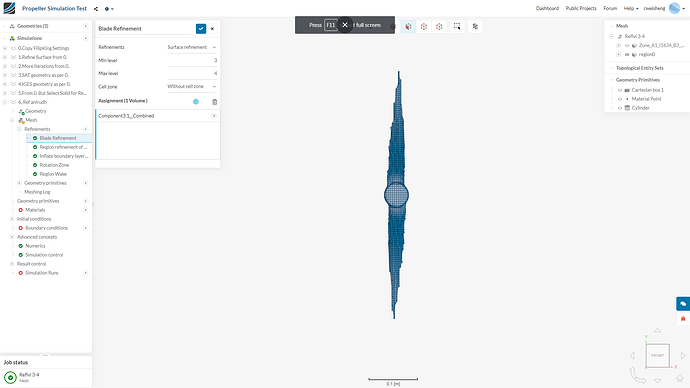Thanks once again.
I went back to default BL settings and this time, the BL don’t form anymore.
I guess I will have to reset other settings and start again since it is not clear what cause it to fail now when it worked before.
Some questions that maybe you can shed some light on:
This type of warning started coming up after I made the changes as per previous discussion and I am not sure what it is referring to:
–> FOAM Warning :
From function void Foam::snappySnapDriver::calcNearestFace(Foam::label, const indirectPrimitivePatch&, const scalarField&, Foam::vectorField&, Foam::vectorField&, Foam::labelList&) const
in file snappyHexMeshDriver/snappySnapDriverFeature.C at line 335
Did not find surface near face centre (-0.0271464054501 0.205854351465 0.0196291287719)
On closer inspection, my leading edge (LE) and trailing edge (TE) are not looking good. I am not sure how to control it here since I am also using a “free” Autodesk Fusion360, as opposed to before when I would split separate surfaces in Solidworks before assigning them as separate surfaces in STARCCM+. Besides making it do more surface refinement, what else should I do? Would the feature refinement help the TE?
I am trying to take an incremental approach (eg. get surface mesh correct, slowly refine BL and volume mesh) but it seems like I am not sure how to lay the foundations and proceed stepwise. Again, appreciate if you have any rules of thumb.
**Update: An attempt at a finer mesh didn’t quite work out - ran out of memory and I am at the 16 processors limit for the free plan. Not sure if I will get to the resolution required for such a sim.
Weisheng
